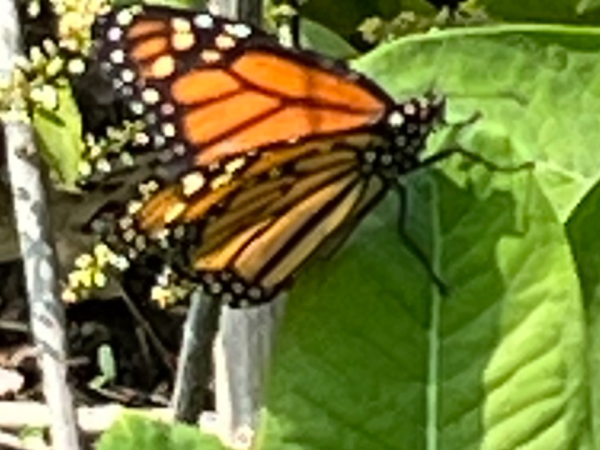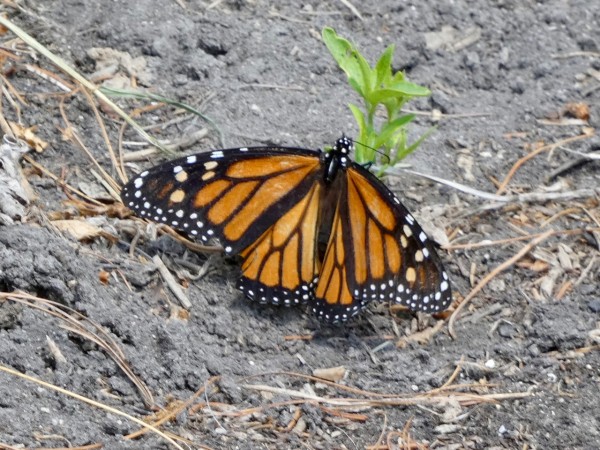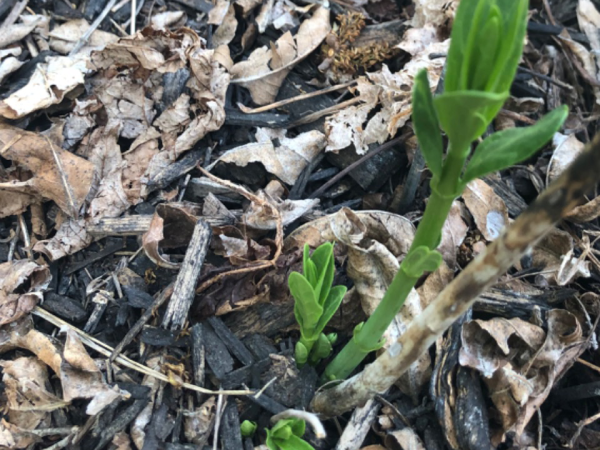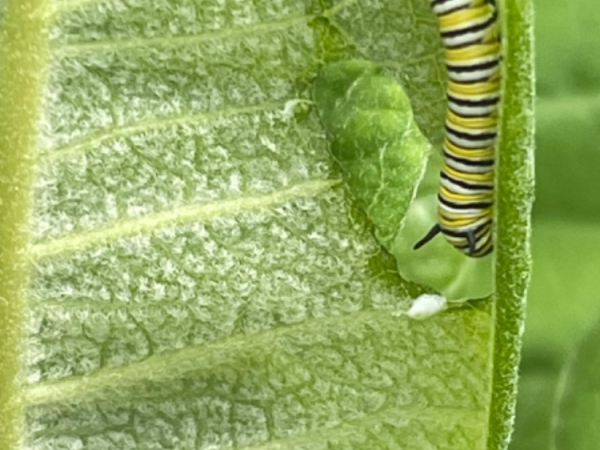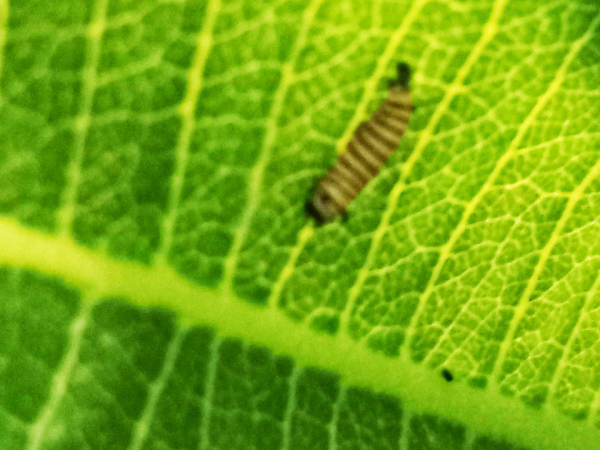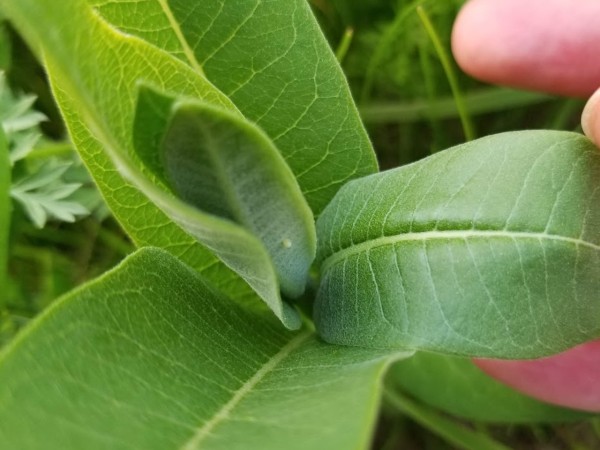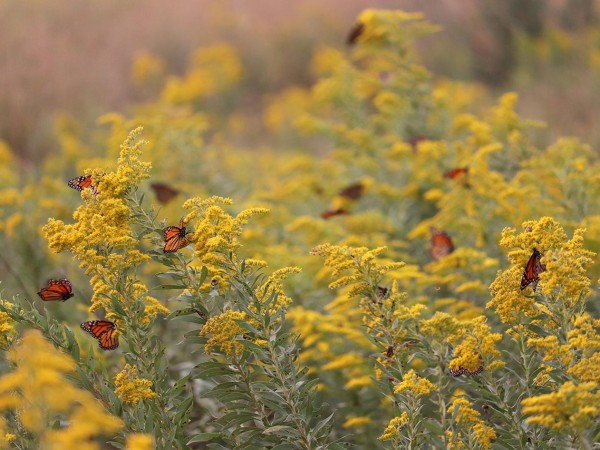Eastern Monarch Spring 2023 Report #7
Published: 05/24/2023
Migrating Monarchs
The leading edge of migration is still scattered between latitude 43-47°N. Activity remains high in the Upper Midwest and is picking up a bit in Southern Ontario. Farther east, reports are trickling in at a slower pace.
How far north will monarchs be next week? Explore our Monarch Adult (FIRST sighted) map and make a prediction.
Alison in Prince Edward, ON: "In flight monarch, about 10 feet off the ground. Beautiful day, sunny with a slight breeze. Milkweed is up about 2 inches. No eggs found." (05/21/2023)
Friends of Watsessing Park in Bloomfield, NJ: "A slightly worn and faded monarch glided into the butterfly garden this morning. Stayed for nearly 15 minutes basking in the sun on common milkweed." (05/22/2023)
Kurt in Burlington, WI: "Perfect day for the 1st monarch to show up! Watched her begin laying eggs" (05/22/2023)
Nancy in Kalamazoo, MI: "Witnessed 1 female fluttering around backyard landing on milkweed." (05/23/2023)
Milkweed
The summer breeding range of monarchs is defined by the northern limit of milkweed. This map shows the northern extent of milkweed. Journey North volunteers are observing milkweed growing in these areas.
Elaina in Winnipeg, MB: "Popping up in my gardens!" (05/19/2023)
Melanie in Winnipeg, MB: "They were not up last weekend but the weather this past week has been sunny and warm." (05/22/2023)
Eggs and Larvae
Where there are adult monarchs and milkweed, eggs and larvae follow.
Sharon in Lancaster, PA: "I found four monarch caterpillars on my common milkweed." (05/19/2023)
Lois in Waverly, IL: "1 2nd instar on Asclepias syriaca." (05/21/2023)
Nicole in Highland Hills, OH: "11 eggs found on various smallish common milkweeds. Right on time--first egg sightings here were May 23, 2021 and May 23, 2022. (I didn't check this location on 5/23/20 because I wasn't aware of it.). . ." (05/23/2023)
Plant Pollinator Gardens
Monarchs need milkweed, but they also need nectar. Pollinator gardens provide crucial resources for migrating monarchs. Do some research to find nectar-rich flowers that grow well in your region. Pay attention to flowering dates so you can provide nectar for monarchs through spring, summer, and fall.
Keep Reporting and Include Photos!
Monarch activity continues to pick up! Report observations of monarch adults, monarch larvae, monarch eggs, and milkweed to Journey North. If possible, please include photos (one photo per report). Photos help verify reports and we enjoy sharing them with our Journey North community.
Monarchs can be difficult subjects to photograph. One potential workaround is to take a video and then extract a screenshot to use as a photo. Give it a shot!

